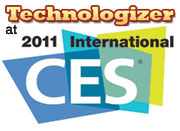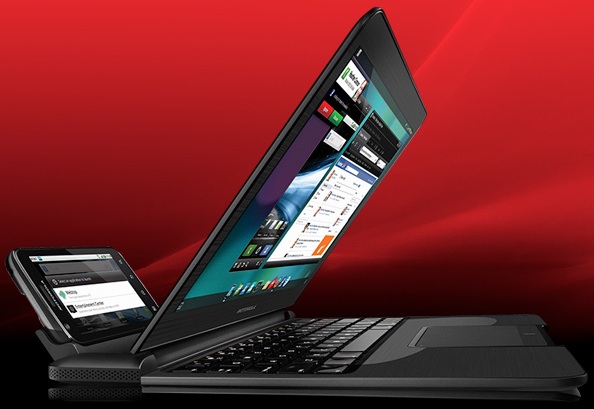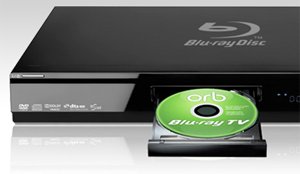Eight Things I Liked at CES
By Harry McCracken | Thursday, January 13, 2011 at 3:16 pm
 I liked CES 2011. I found it useful and fun. I’m glad I went. None of those reactions were a given–I understand why some folks question the show’s very reasons for existing, and I’ve been known to accentuate the negative myself. This year, however, there was a critical mass of interesting stuff, in multiple categories.
I liked CES 2011. I found it useful and fun. I’m glad I went. None of those reactions were a given–I understand why some folks question the show’s very reasons for existing, and I’ve been known to accentuate the negative myself. This year, however, there was a critical mass of interesting stuff, in multiple categories.
From Tuesday afternoon of last week through Saturday, I spent so much time learning about new products that I didn’t cover all that many of them here while the show was going on. So here’s a catch-up post with a few of the ones that made this CES one of the best ones in my memory–despite the insane crowds, the aisles and aisles of lookalike phone covers, and the jingling case of slot-machine tinnitus that I still can’t quite shake.
1. Car stuff.
 I headed to Vegas assuming that the two big CES trends this year would be 3D TV and tablets. I also assumed that the automotive announcements would be dreary–the giant hall devoted to car electronics has always struck me as being fifteen to twenty years behind the rest of the show. But it turned out that there were tons of interesting automotive products, from Toyota’s Entune to GM’s rear-view mirror with built-in OnStar to automotive operating-system developer QNX’s concept dashboard with a built-in docking station for a BlackBerry PlayBook, manufactured by QNX’s owner, RIM (see photo at right). Not all of these items I saw are going to be good, and none of them are out just yet–but they give me hope that CES’s car section will no longer be a backwater.
I headed to Vegas assuming that the two big CES trends this year would be 3D TV and tablets. I also assumed that the automotive announcements would be dreary–the giant hall devoted to car electronics has always struck me as being fifteen to twenty years behind the rest of the show. But it turned out that there were tons of interesting automotive products, from Toyota’s Entune to GM’s rear-view mirror with built-in OnStar to automotive operating-system developer QNX’s concept dashboard with a built-in docking station for a BlackBerry PlayBook, manufactured by QNX’s owner, RIM (see photo at right). Not all of these items I saw are going to be good, and none of them are out just yet–but they give me hope that CES’s car section will no longer be a backwater.
2. PC stuff.
 Another unexpected trend at this year’s show: PCs! There were gazillions of new ones from companies such as Lenovo. Intel introduced its second-generation Core platform. AMD launched its Fusion “APUs”–new processors with powerful integrated graphics and competitive power consumption, as seen in machines such as HP’s new DM1, that make AMD-powered notebooks a far more credible Intel alternative than they’ve been in years. Dolby rolled out new versions of its PC audio features, seen first in new Acer laptops and coming soon to other brands. In some ways, all this was more meaningful than the invasion of umpteen lookalike, not-yet-available Android tablets.
Another unexpected trend at this year’s show: PCs! There were gazillions of new ones from companies such as Lenovo. Intel introduced its second-generation Core platform. AMD launched its Fusion “APUs”–new processors with powerful integrated graphics and competitive power consumption, as seen in machines such as HP’s new DM1, that make AMD-powered notebooks a far more credible Intel alternative than they’ve been in years. Dolby rolled out new versions of its PC audio features, seen first in new Acer laptops and coming soon to other brands. In some ways, all this was more meaningful than the invasion of umpteen lookalike, not-yet-available Android tablets.
3. Motorola’s Atrix 4G.
 Jared was nice enough to note in his Atrix write-up that I wrote in 2009 that I thought we’d eventually see “dumb clamshells” that give smartphones full QWERTY keyboards and roomy screens. I’d forgotten I’d written that–but I’m pleased to see that Motorola is going to sell the device I was talking about. It looks like it could be a far more useful gizmo than any Chrome OS notebook–and even if it isn’t, I’m glad Motorola is giving it a try. I don’t want to have to dock my phone in the dumb clamshell, though–I want to be able to keep it in my pocket. Maybe that technology will be ready in time for the Atrix 2.
Jared was nice enough to note in his Atrix write-up that I wrote in 2009 that I thought we’d eventually see “dumb clamshells” that give smartphones full QWERTY keyboards and roomy screens. I’d forgotten I’d written that–but I’m pleased to see that Motorola is going to sell the device I was talking about. It looks like it could be a far more useful gizmo than any Chrome OS notebook–and even if it isn’t, I’m glad Motorola is giving it a try. I don’t want to have to dock my phone in the dumb clamshell, though–I want to be able to keep it in my pocket. Maybe that technology will be ready in time for the Atrix 2.
4. Project Lunch Box.
 In a suite at the Aria hotel, Seagate demoed a tiny external USB 3.0 RAID 0 box–a little portlier than one of its standard GoFlex drives, since it contains two hard disks–that uses cheap, capacious hard disks but ekes out SSD-like speed. The company isn’t yet saying when “Project Lunch Box” might become a real product.
In a suite at the Aria hotel, Seagate demoed a tiny external USB 3.0 RAID 0 box–a little portlier than one of its standard GoFlex drives, since it contains two hard disks–that uses cheap, capacious hard disks but ekes out SSD-like speed. The company isn’t yet saying when “Project Lunch Box” might become a real product.
5. Sonic eCopy.
Sonic, the parent company of such digital-entertainment brands as Roxio and DivX showed a service that would let you take DVDs and/or Blu-Rays you already owned, pop them briefly into your PC’s optical drive to prove they were in your possession, and then pay a small fee (maybe a buck or so) to unlock a digital version which you could stream to computers, phones, set-top boxes, and other Web-connected gizmos. It’s reminiscent of the wonderful MP3.com CD service that the RIAA was able to shut down eleven years ago, except that Sonic would launch this in partnership with content owners. (They’d make money from the unlocking fee and would be able to offer consumers upgrades such as higher-quality versions of movies or sequels.) No news yet on when this might become available, but I’m already waiting with a stack of DVDs in hand.
6. Orb’s boxless media streamer.
 Orb Networks, which makes devices for streaming video and music to a TV, introduced Orb BR, a product that can stream Hulu, Netflix, Pandora, and other services–and it’s a $20 Blu-Ray disc that works in any BD Live-compatible player (including the PlayStation 3), not a piece of hardware. It sounds better than Orb’s $99 Orb TV device –Orb BR does HD video, while Orb TV is limited to standard def.
Orb Networks, which makes devices for streaming video and music to a TV, introduced Orb BR, a product that can stream Hulu, Netflix, Pandora, and other services–and it’s a $20 Blu-Ray disc that works in any BD Live-compatible player (including the PlayStation 3), not a piece of hardware. It sounds better than Orb’s $99 Orb TV device –Orb BR does HD video, while Orb TV is limited to standard def.
7. The New TDK
 I haven’t given much thought to TDK since the days when I splurged on its audiocassettes rather than buying cheapo Radio Shack ones. But Imation, which owns the TDK brand for consumer products, introduced a bunch of new TDK equipment at CES–and rather than just Polaroidizing the name by slapping it on random generic products, it’s offering distinctive products with a design aesthetic that somehow looks both modern and 1970sish, as if the old TDK had continued to evolve into the iPod era. The lineup includes boomboxesque high-end speaker systems for iPods and other portable players, headphones, and, inevitably, turntables.
I haven’t given much thought to TDK since the days when I splurged on its audiocassettes rather than buying cheapo Radio Shack ones. But Imation, which owns the TDK brand for consumer products, introduced a bunch of new TDK equipment at CES–and rather than just Polaroidizing the name by slapping it on random generic products, it’s offering distinctive products with a design aesthetic that somehow looks both modern and 1970sish, as if the old TDK had continued to evolve into the iPod era. The lineup includes boomboxesque high-end speaker systems for iPods and other portable players, headphones, and, inevitably, turntables.
8. The BlackBerry PlayBook.
Yes, I know that the PlayBook made its debut back at RIM’s September developer event, not at CES. But it was still my favorite CES tablet. For one thing, it looked like it might be closer to being ready to ship than some of its Android-based competition–RIM had plenty of them in its booth, and let attendees, including me, get hands-on time with them. I still like the 7″ form factor and am impressed by the tablet’s beefy specs. And the user interface–which looks far more like Palm’s WebOS than it does like any previous RIM product–is bursting with potential. Now if we only knew when the PlayBook will ship and how much it’ll cost.
5 Comments
Read more:













January 13th, 2011 at 11:38 pm
I was impressed by the ASUS tablet line up. For me this was the biggest news of all because tablets now incorporate keyboards. This should ensure increased adoption rates, especially in the business world.
January 14th, 2011 at 6:53 am
The high end audio for ipods from TDK sounds interesting, definitely something to keep an eye out for.
January 14th, 2011 at 9:18 am
The TDK offerings look interesting, but the lack of attention to details on the fancy web site leaves me wondering. They used "base" instead of "bass," they split "Apple cable" into its own bullet apart from "Play your iPod/iPhone music while charging using the USB to 30 pin," etc. Those are just on the "3 Speaker Boombox" page!
There are design flaws in the "3 Speaker Boombox," too. It requires 12 D batteries! Are they kidding? It is supposed to be portable, like boomboxes of old, yet the devices providing the content can't be attached to it except with a cable. Are users supposed to carry the boombox on one shoulder and the iPod on the other! There's no mention of the iPad either. Presumably, audio would work, but does it charge, too?
I didn't spend time looking at anything else but the in-ear headphones. They look interesting, but no specs are given and, of course, hearing is believing with such things.
January 23rd, 2011 at 7:57 am
Its amazing how much Blackberry completely copied WebOS. I guess HP wasted 1.2b dollars then. They could have just pulled a Blackberry and copied the OS instead of outright buying it. I just don't get it. The gestures, screen minimizations, app switching…. all of it is straight from WebOS. None of it differentiates itself from WebOS, but instead completely mimicks it. Sad.
August 9th, 2011 at 1:36 am
Blackberry playbook impressed me much now I am efficiently run the games or my favorite application faster with this.